
Uniforms & Insignia | Ranks & Organization | Misc. | Contact
Military Branch | Engineer Branch | Medical Branch | Accountant Branch | Naval Instructor Branch | Artisan Branch | Khaki Uniform
In 1914, much like today, Royal Navy officers' rank and branch was indicated by details on the cap, by stripes on the sleeves of blue coats, on shoulder straps worn on white uniforms and greatcoats, and on the collar by midshipmen and cadets.
The officers who commanded or were in line to command the vessels of the Royal Navy were termed the Military Branch. The uniforms of officers of the other branches were distinguished from the Military Branch in a number of ways:
Except for full dress, warrant officers and commissioned warrant officers wore the same uniforms as commissioned officers, but were distinguished by cuffs with three buttons and buttonholes of blue "twist."
The first major change in officer insignia occured in 1915. Engineer officers had been granted "military" rank titles, with the prefix "engineer," in 1903. On January 1, 1915, engineer officers became part of the Military Branch and were given the same insignia, with the exception that they retained their purple distinction cloth.
The next major changes were in 1918. A new color of distinction cloth was prescribed for shipwrights (formerly carpenters) in early 1918. Then in October, the insignia of officers of the non-military branches, commissioned warrant and warrant officers were changed completely. Admiralty Weekly Order 3224/18 extended the same distinctions to the officers of other branches as had been given to engineers in 1915, again with the exception of retaining the colored cloth. Their titles were likewise changed to incorporate "military" ranks.
The insignia of warrant and commissioned warrant officers were changed by Admiralty Weekly Order 2945/18 of September 3, which eliminated the distinctive cuff buttons, and prescribed a single quarter-inch stripe for all warrant officers regardless of seniority. AWO 3224/18 put these changes into effect. This gave commissioned warrant officers a uniform essentially identical to a sub-lieutenant's.
Officers were given three years before the changes became mandatory.
| Buttons: | |
|---|---|
 Flag Officers |
 Other Officers |
The rank of Lieutenant-Commander was created effective April 1, 1914, in place of the former Lieutenant of eight years seniority.
| Commissioned and Warrant Officers |
|||||||||||||
|---|---|---|---|---|---|---|---|---|---|---|---|---|---|
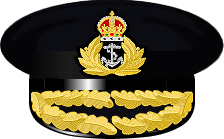 |
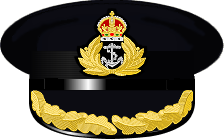 |
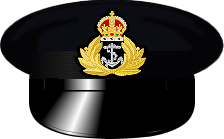 |
|||||||||||
 |
 |
 |
 |
 |
 |
 |
 |
 |
 |
 |
 |
 |
 |
 |
 |
 |
 |
 |
 |
 |
 |
 |
 |
 |
 |
 10 years seniority |
 under 10 years seniority |
| Admiral of the Fleet | Admiral | Vice-Admiral | Rear-Admiral | Commodore 1st Class | Commodore 2nd Class | Captain | Commander | Lieutenant-Commander | Lieutenant | Sub-Lieutenant, Mate |
Chief Gunner, Chief Boatswain, Chief Signal Boatswain | Gunner, Boatswain, Signal Boatswain, Warrant Telegraphist |
|
| Subordinate Officers | |
|---|---|
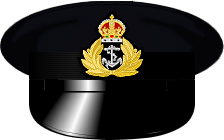 |
|
 collar |
 collar |
| Midshipman | Cadet |
In November 1918, the cuff buttons for commissioned warrant and warrant officers were eliminated, and a single narrow stripe ordered for all warrant officers regardless of seniority.
| Commissioned and Warrant Officers |
||||||||||||
|---|---|---|---|---|---|---|---|---|---|---|---|---|
 |
 |
 |
||||||||||
 |
 |
 |
 |
 |
 |
 |
 |
 |
 |
 |
 |
|
 |
 |
 |
 |
 |
 |
 |
 |
 |
 |
 |
 |
|
| Admiral of the Fleet | Admiral | Vice-Admiral | Rear-Admiral | Commodore 1st Class | Commodore 2nd Class | Captain | Commander | Lieutenant-Commander | Lieutenant | Sub-Lieutenant, Mate, Chief Gunner,* Chief Boatswain,* Chief Signal Boatswain,* Commissioned Telegraphist,* Commissioned Master-at-Arms* | Gunner, Boatswain, Signal Boatswain, Warrant Telegraphist, Chief Master-at-Arms | |
| *Commissioned from warrant rank | ||||||||||||
| Subordinate Officers | |
|---|---|
 |
|
 collar |
 collar |
| Midshipman | Cadet |
The rank of Engineer Lieutenant-Commander was created effective April 1, 1914, in place of the former Engineer Lieutenant (Senior List).
| Commissioned and Warrant Officers |
|||||||||
|---|---|---|---|---|---|---|---|---|---|
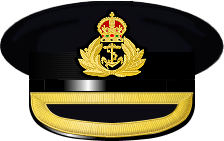 |
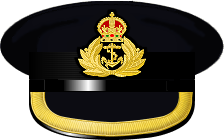 |
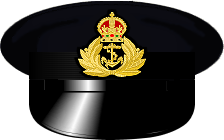 |
|||||||
 |
 |
 |
 |
 |
 |
 |
 |
 |
 |
 |
 |
 |
 |
 |
 |
 |
 |
 10 years seniority |
 under 10 years seniority |
| Engineer Vice-Admiral | Engineer Rear-Admiral | Engineer Captain | Engineer Commander | Engineer Lieutenant-Commander | Engineer Lieutenant | Engineer Sub-Lieutenant, Mate (E) |
Chief Artificer Engineer, Commissioned Mechanician | Artificer Engineer, Warrant Mechanician |
|
| Commissioned and Warrant Officers |
|||||||||
|---|---|---|---|---|---|---|---|---|---|
 |
 |
 |
|||||||
 |
 |
 |
 |
 |
 |
 |
 |
 |
 |
 |
 |
 |
 |
 |
 |
 |
 |
 10 years seniority |
 under 10 years seniority |
| Engineer Vice-Admiral | Engineer Rear-Admiral | Engineer Captain | Engineer Commander | Engineer Lieutenant-Commander | Engineer Lieutenant | Engineer Sub-Lieutenant, Mate (E) |
Chief Artificer Engineer, Commissioned Mechanician | Artificer Engineer, Warrant Mechanician |
|
| Commissioned and Warrant Officers |
|||||||
|---|---|---|---|---|---|---|---|
 |
 |
 |
|||||
 |
 |
 |
 |
 |
 |
 |
 |
 |
 |
 |
 |
 |
 |
 |
 |
| Engineer Vice-Admiral | Engineer Rear-Admiral | Engineer Captain | Engineer Commander | Engineer Lieutenant-Commander | Engineer Lieutenant | Engineer Sub-Lieutenant, Mate (E), Chief Artificer Engineer,* Commissioned Mechanician* | Artificer Engineer, Warrant Mechanician |
| *Commissioned from warrant rank | |||||||
| Commissioned and Warrant Officers |
|||||||||
|---|---|---|---|---|---|---|---|---|---|
 |
 |
 |
|||||||
 |
 |
 |
 |
 |
 |
 |
 |
||
 |
 |
 |
 |
 |
 |
 10 years seniority |
 under 10 years seniority |
||
| Medical Director-General | Surgeon-General | Deputy Surgeon-General | Fleet Surgeon | Staff Surgeon | Surgeon | Head Wardmaster |
|||
| Commissioned and Warrant Officers |
|||||||
|---|---|---|---|---|---|---|---|
 |
 |
 |
|||||
 |
 |
 |
 |
 |
 |
 |
 |
 |
 |
 |
 |
 |
 |
 |
 |
| Surgeon Vice-Admiral | Surgeon Rear-Admiral | Surgeon Captain | Surgeon Commander | Surgeon Lieutenant-Commander | Surgeon Lieutenant | Commissioned Wardmaster | Warrant Wardmaster |
| Commissioned and Warrant Officers |
|||||||
|---|---|---|---|---|---|---|---|
 |
 |
||||||
 |
 |
 |
 |
 |
 |
 |
|
 |
 |
 |
 |
 |
 10 years seniority |
 under 10 years |
|
| Paymaster-in-Chief, Secretary to an Admiral of the Fleet, Secretary to a Commander-in-Chief (5 years in rank) |
Fleet Paymaster, Secretary to a Commander-in-Chief (under 5 years in rank) |
Staff Paymaster, Paymaster, Secretary to Flag Officer, Commodore 1st Class or Captain of the Fleet |
Assistant Paymaster of 4 years seniority, Secretary to a Commodore 2nd Class |
Assistant Paymaster | Warrant Writer, Head Steward, Instructor in Cookery |
||
| Subordinate Officers |
|---|
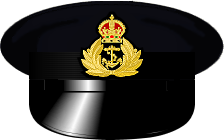 |
 |
 |
| Clerk, Assistant Clerk |
| Commissioned and Warrant Officers |
||||||
|---|---|---|---|---|---|---|
 |
 |
 |
||||
 |
 |
 |
 |
 |
 |
 |
 |
 |
 |
 |
 |
 |
 |
| Paymaster Rear-Admiral | Paymaster Captain | Paymaster Commander | Paymaster Lieutenant-Commander | Paymaster Lieutenant | Paymaster Sub-Lieutenant, Commissioned Writer,* Commissioned Victualling Officer,* Commissioned Instructor in Cookery* | Warrant Writer, Warrant Victualling Officer, Warrant Instructor in Cookery |
| *Commissioned from warrant rank. | ||||||
| Subordinate Officers | |
|---|---|
 |
|
 |
|
 |
|
| Paymaster Midshipman, Paymaster Cadet |
|
| Commissioned and Warrant Officers |
|||||
|---|---|---|---|---|---|
 |
 |
||||
 |
 |
 |
 |
 |
 |
 |
 |
 |
 |
 10 years seniority |
 under 10 years seniority |
| Naval Instructor of 15 years seniority | Naval Instructor of 8 years seniority | Naval Instructor | Chief Schoolmaster | Head Schoolmaster |
|
| Commissioned and Warrant Officers |
|||||
|---|---|---|---|---|---|
 |
 |
||||
 |
 |
 |
 |
 |
 |
 |
 |
 |
 |
 |
 |
| Instructor Captain | Instructor Commander | Instructor Lieutenant-Commander | Instructor Lieutenant, Schoolmaster Lieutenant* |
Chief Schoolmaster* | Head Schoolmaster |
| *Commissioned form warrant rank. | |||||
Before 1918, officers of the Artisan Branch did not wear colored distinction cloth, but were distinguished from the Military Branch by not using the curl in the rank stripe.
| Commissioned and Warrant Officers |
||||
|---|---|---|---|---|
 |
||||
 |
 |
 |
 |
 |
 |
 |
 |
 10 years seniority |
 under 10 years seniority |
| Carpenter Lieutenant-Commander | Carpenter Lieutenant | Chief Carpenter | Carpenter, Warrant Electrician, Warrant Armourer |
|
In February 1918, the title "Carpenter" was replaced with "Shipwright." At some point after that, they were given silver-grey distinction cloth, previously worn by students in naval construction. The change to silver-grey first appeared in uniform regulations in the July 1918 Navy List.
| Commissioned and Warrant Officers |
||||
|---|---|---|---|---|
 |
||||
 |
 |
 |
 |
 |
 |
 |
 |
 10 years seniority |
 under 10 years seniority |
| Shipwright Lieutenant-Commander | Shipwright Lieutenant | Commissioned Shipwright | Warrant Shipwright |
|
 |
 |
 |
||
 |
 10 years seniority |
 under 10 years seniority |
||
| Commissioned Electrician, Commissioned Armourer | Warrant Electrician, Warrant Armourer |
|||
In addition to adopting the curl and changing the cap badges, new distinctive colors were prescribed for armourers (dark blue) and electricians (dark green).
| Commissioned and Warrant Officers |
|||
|---|---|---|---|
 |
|||
 |
 |
 |
 |
 |
 |
 |
 |
| Shipwright Lieutenant-Commander | Shipwright Lieutenant | Commissioned Shipwright | Warrant Shipwright |
 |
 |
||
 |
 |
||
| Commissioned Armourer | Warrant Armourer | ||
 |
 |
||
 |
 |
||
| Commissioned Electrician | Warrant Electrician | ||
Even before the war, some officers had their tailors "navalize" Army khaki uniforms for service ashore. With large numbers of officers serving on land in the Royal Naval Division and the Royal Naval Air Service, the Admiralty formally recognized the widespread practice in November 1916. The rank insignia were the same sleeve stripes as on the blue uniform, in a drab khaki shade instead of gold, with standard colored branch distinction cloth. Many officers also wore Army rank insignia on the shoulders, though this was not permitted officially.
In British uniform terminology at the time, "khaki" referred to wool of drab greenish-brown color, while "khaki drill" was cotton material of a lighter shade for wear in warm weather.
 |
 |
 |
 |
 |
 |
 |
 |
 |
 |
 |
 |
 |
 |
 |
 |
 |
 |
All text and images © Justin T. Broderick, 2013-2021 unless otherwise indicated.